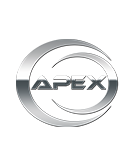UV vs Screen vs Offset Printing
Giving you the highest-quality and most professional-looking sign is our highest priority here at Signs.com. Not only do we offer incredible materials to print your design on, we also have chosen the best printing methods to make your design as vibrant and long lasting as possible. The advantages of different printing styles allow for customizable printing for any type of material, purpose, and size.
Three of the most popular used printing methods are UV printing, screen printing, and offset printing. Each process is unique in its own right, providing for high-quality printing on a variety of materials. We’ve outlined each method below, showing you the diversity of the printing industry and how your products benefit from these state-of-the-art processes.
Digital UV (Ultraviolet) Printing
The first thing you think of when you hear about ultraviolet light is probably the sun. You’re on the right track when it comes to the digital UV printing process. Though the printer doesn’t harness the sun’s power to print your signs, it does however use the same type of UV lighting to dry specialized ink onto the material of your choice. Unlike solvent inks that air dry or cure using heat, UV ink instantly reacts to UV light, drying it quicker than any other current method. Why does this matter, you ask? Because the ink dries instantly, it does not have time to evaporate into the air or be absorbed into the material it is printed on. As a result, the printed color is more vibrant and can be printed on a variety of substrates. Preventing the ink from evaporating into the air also means significantly fewer emissions from volatile organic compounds (VOC’s) harming the environment.


